- News
- Reviews
- Bikes
- Accessories
- Accessories - misc
- Computer mounts
- Bags
- Bar ends
- Bike bags & cases
- Bottle cages
- Bottles
- Cameras
- Car racks
- Child seats
- Computers
- Glasses
- GPS units
- Helmets
- Lights - front
- Lights - rear
- Lights - sets
- Locks
- Mirrors
- Mudguards
- Racks
- Pumps & CO2 inflators
- Puncture kits
- Reflectives
- Smart watches
- Stands and racks
- Trailers
- Clothing
- Components
- Bar tape & grips
- Bottom brackets
- Brake & gear cables
- Brake & STI levers
- Brake pads & spares
- Brakes
- Cassettes & freewheels
- Chains
- Chainsets & chainrings
- Derailleurs - front
- Derailleurs - rear
- Forks
- Gear levers & shifters
- Groupsets
- Handlebars & extensions
- Headsets
- Hubs
- Inner tubes
- Pedals
- Quick releases & skewers
- Saddles
- Seatposts
- Stems
- Wheels
- Tyres
- Health, fitness and nutrition
- Tools and workshop
- Miscellaneous
- Cross country mountain bikes
- Tubeless valves
- Buyers Guides
- Features
- Forum
- Recommends
- Podcast
review
£2,499.99
VERDICT:
A superb disc brake-equipped race bike, but it does come with a weight penalty
Weight:
8,500g
Contact:
At road.cc every product is thoroughly tested for as long as it takes to get a proper insight into how well it works. Our reviewers are experienced cyclists that we trust to be objective. While we strive to ensure that opinions expressed are backed up by facts, reviews are by their nature an informed opinion, not a definitive verdict. We don't intentionally try to break anything (except locks) but we do try to look for weak points in any design. The overall score is not just an average of the other scores: it reflects both a product's function and value – with value determined by how a product compares with items of similar spec, quality, and price.
What the road.cc scores meanGood scores are more common than bad, because fortunately good products are more common than bad.
- Exceptional
- Excellent
- Very Good
- Good
- Quite good
- Average
- Not so good
- Poor
- Bad
- Appalling
Cannondale's SuperSix Evo is now available with disc brakes, with three models available in 2017 built around a redesigned frame and fork. The result is a startlingly familiar ride with the same refined handling and smoothness I've come to expect from the Evo, with the benefits of the hydraulic disc brakes; but there is a weight penalty on this £2,500 model, the most affordable in the lineup.
I've always really liked Cannondale's SuperSix Evo for racing and performance focused riding. It blends all the key attributes I look for in a race bike: low weight, high stiffness, sharp handling and impressive comfort. It hasn't really changed much since it was launched in 2011 – refined and evolved rather than radically redesigned during its tenure as Cannondale's flagship race bike. Make a good bike better, rather than any radical redesign, has been the overriding philosophy.
> Find your nearest dealer here
The adoption of disc brakes with the latest model is arguably the biggest development in its history, and marks a turning point for the US company's race lineup. It's clear many bike brands involved with professional cycling are preparing for a possible future where the pro peloton is riding disc-equipped bikes. So if this bike is the future of race bikes, is it any good, or has any of the magic been lost?
Ride and handling
I needn't have worried. Cannondale has worked its engineering magic and created a package that manages to retain all the key ingredients that made the regular SuperSix Evo such an agreeable bike, while adding the benefits – greater stopping power and control – that hydraulic disc brakes bring to the table. Okay, you might not be a fan of disc brakes, and that is fine – Cannondale still offers the Evo without them if that is your preference – but if you've read this far into the review, it's likely that disc brakes are something you're interested in.
> Read our review of the Cannondale SuperSix Evo Hi-Mod Dura-Ace 1
Almost immediately it's apparent the handling is as refined and focused as the original Evo; if anything, the steering responses have been sharpened up. Cannondale has employed a 12mm thru-axle on the fork which shares its skinny and aero design with the regular Evo, and combined with the very stiff Mavic wheels there's not a degree of flex detectable from the front end when sprinting or climbing out of the saddle. It's rock solid. Cannondale has succeeded in achieving its goal of keeping the handling the same as the previous Evo.
The reason for this similarity is that Cannondale has retained the same geometry as the regular bike, with its short 405mm chainstays, 989mm wheelbase and 73.1-degree head angle providing the agility and nimbleness the original Evo was renowned for. It's a really fun bike to ride. In the middle of a fast-moving pack it's precise and easy to make minute adjustments, on a fast flowing descent it's stable and planted, and long solo rides are fast and comfortable.
Shimano's hydraulic disc brakes are impressive in their modulation and outright braking power: you can hold the bike on the very edge of the braking limit of the tyres with ease. On badly surfaced roads littered with gravel, orwhen riding in the rain – and there's plenty of both at this time of year – there's enough feel at the lever to apply the necessary amount of braking force to provide controlled and safe stopping. For feathering speed through bends too, the brakes let you make fine adjustments with a single finger.
Though it looks almost identical to the previous bike, Cannondale has completely redesigned the frame from the bottom bracket up. The focus has been on finding increased compliance and stiffness, and it seems to have worked. This bike is razor sharp when you snap out of corners and sprint after sudden and unexpected attacks from the bunch. You can't blame the bike if you miss the move.
Comfort is similarly impressive. It was always one of the Evo's hidden secrets: a race bike that was so smooth it made you wonder why you'd ride anything else. It would look after you in a long road race as well as it would on an 'epic' all-day ride taking in all manner of road surfaces. The Evo comes with 25mm tyres and it provides ample comfort, but there's easily space for wider rubber.
This is the most affordable Evo Disc in the new range, and it's clear the weight has taken a bit of a hit to squeeze everything in on budget. While 8.5kg isn't exactly heavy, and it's on a par with similarly priced and specced disc-equipped carbon road bikes, it's nearly 1kg heavier than a similarly specced rim-braked Evo. I'll hastily add that the weight didn't overly impact the ride to a detrimental effect, but you do notice it at times, mostly on the steepest inclines.
Cannondale has actually managed to keep the disc frame weight low – by far the biggest contributor to the extra weight overall is the Mavic Aksium wheelset: it weighs 2kg. I swapped to the 3T Discus C35 Team wheels and instantly lopped off nearly 500g. A few other changes could bring the weight well below 8kg, and much lighter examples have been shared on social media that show it's possible to get it well below the UCI weight limit of 6.8kg.
The bike is built to a price, though, and unfortunately there are no light disc wheels that would fit Cannondale's budget. It's a shame, but unless you're riding up big mountains every day, the weight doesn't always influence the ride in a negative way, and I certainly didn't feel the weight holding me back on my regular test ride loops.
Frame and equipment
As I've said, this is the most affordable of three disc brake-equipped Evo models being offered for 2017. The equipment includes a Shimano Ultegra mechanical groupset with a Cannondale Si chainset, with 52/36 FSA chainrings combining with an 11-28t cassette, providing the spread of gears you need for racing and fast riding. Shimano's RS685 brakes are as powerful and reliable as we've come to expect, and I experienced no rubbing, squealing or howling during my all-weather testing.
The bike is fitted with Cannondale's own aluminium seatpost, a nicely shaped compact handlebar and stem. The Prologo Kappa 3 saddle provides a generic shape that most people will probably find comfortable – I certainly did.
Cannondale has long fitted Mavic wheels and the French company's most affordable – and heaviest – Aksium Disc wheels are accompanied here by matching Yksion Elite 25mm tyres. It's all solidly dependable kit, if not that light or flattering to the lightweight frame and fork.
If you ignore the disc brakes, Cannondale has managed to retain the iconic silhouette of the non-disc Evo. The changes are subtle; it has redesigned every aspect of the frame but most of the changes are on the inside, with different internal tube profiles to cope with the demands placed on the frame by disc brakes.
Cannondale has, though, carried over the Tap (Truncated Aero Profile) tube profiles introduced on the most recent Evo, used here for the down tube, seat tube, seatstays and fork blades. While not the full-on aero approach you see with Specialized's Venge ViAS Disc (see our Just In video here), the tube profile has been shaped to improve aerodynamic performance over the previous round tube, though Cannondale doesn't make massive claims for its reduced drag.
The new fork is very similar in design to the regular rim brake fork, with the same skinny blade design and clearance for up to 28mm tyres. While Cannondale has routed the brake hoses inside the frame and fork, the gear cables on this mechanical geared bike are routed along the bottom of the down tube. Cannondale has told me in the past that external cable routing is lighter, and it's certainly easier to work on.
Thru-axles and disc brakes are two technologies that go hand-in-hand, both imports from the mountain bike world. Many years ago when thru-axles were still a new thing on suspension forks, most frame manufacturers stuck with conventional quick release rear axles, and indeed many mountain bikes still stick do. And that's the approach that Cannondale has also taken with the Evo Disc, speccing a 12mm thru-axle at the front and a 135mm quick release rear axle.
Cannondale's reasoning is that there's little benefit to be gained from fitting a thru-axle to the frame. It's not alone; we've heard similar explanations from other frame manufacturers. There's certainly no detrimental effect on the performance – no flex or disc brake rub from the rear wheel when sprinting.
Other details include a BB30A bottom bracket, an advance of the previous BB30 bottom bracket design pioneered by Cannondale. Its width is increased on the non-drive side in an effort to increase frame stiffness. It makes negligible difference when turning the pedals; I certainly couldn't detect the difference to an Evo with the older BB30 standard. There's a 25.4mm seatpost, a feature of the previous Evo borrowed directly from the Synapse endurance bike. The smaller diameter post is designed to provide extra deflection, but with less post extending from the frame because of the near horizontal top tube, the effect is limited compared with compact frame designs.
Weight is one of the casualties of the new bike, especially this non-Hi-Mod variant. The top-end Evo Hi-Mod Disc frame comes in at 829g and 360g for the fork, compared to 777g and 280g for the rim-braked SuperSix Evo (those are claimed weights – we haven't weighed them). This model uses less of the expensive high-modulus carbon and the weight is about 100-150g heavier. The company has always prided itself on making some of the lightest frames and while the disc version is clearly heavier than the standard version, you need to decide whether a couple of hundred grams of extra weight outweighs the benefits of the disc brakes, and that depends on the sort of rider you are and the terrain you're riding.
While for most mere mortals weight isn't always the most important thing, for a bike that the company hopes will one day be raced in the WorldTour, weight is everything. But I can't see any reason why a top spec model wouldn't come close, or even below, the UCI's magic 6.8kg weight limit. Given how incredibly light the top-end Evo Black Inc model is (5.9kg), it shouldn't be difficult, provided you have the budget, to build a superlight Evo Disc.
Other bikes to consider
Arguably one of the biggest competitors of the Evo Disc is the Specialized Tarmac Disc. I reviewed the pricey S-Works Tarmac Disc and was blown away by its performance, but the Tarmac Comp Disc (£2,600) offers a near-identical specification of Shimano Ultegra with hydraulic brakes. (Buy it online here.)
Other bikes for consideration include the Orro Gold STC Disc Ultegra (£2,199). While more of a gran fondo bike, Mat found it as lively and responsive as a race bike, and it undercuts the Evo Disc on price with a similar spec.
> 10 of the best Ultegra-equipped road bikes
You could also consider the Genesis Zero Disc i (£3,299), which for the extra money sees the weight drop to 8.2kg despite using a very similar Ultegra build.
Another option to consider is upgrading to the SuperSix Evo Hi-Mod Disc Ultegra (£3,699). It retains a broadly similar build kit but with the higher quality Hi-Mod frame, essentially the same in shape and style as the one tested here, but lighter. If you have any upgrade plans, this is a better platform to start from. (Buy it online here.)
Conclusion
If you're a convert to disc brakes and want a disc-equipped race bike, your options are pretty limited as most manufacturers have been focusing their attention on endurance bikes for the past couple of years. That's slowly changing and the choice is increasing: the Specialized S-Works Tarmac Disc is notable as the first such race bike with discs I tested two years ago. The Evo Disc here isn't quite as scintillating a ride as the S-Works, mostly due to the top-end build of the latter producing a 6.9kg build, but the Evo is certainly no slouch. You just have to press the pedals a bit harder. And maybe upgrade the wheels.
The only fly in the ointment is that weight penalty, which on this £2,500 Ultegra model is significant when compared with a similarly specced rim brake version. It's early days for disc brakes but we're heading towards a future where the weight difference will hopefully level out – it certainly happened in the mountain bike world. Right now, though, the decision is whether you value better brakes or lower overall weight, and that comes down to your personal preference and the terrain you ride regularly.
If you rarely use the brakes or ride in the rain, the advantage of disc brakes to your riding might be limited. If you don't mind a bit of extra weight and value braking performance for dealing with fast descents and bad weather, there is no denying disc brakes are hugely attractive on a bike built for speed. That might seem counterintuitive because brakes are there for slowing you down. True, but it's the greater amount of control and braking ability that makes the Evo Disc much more usable in real world conditions, rain or shine. Try riding a bike without brakes and see how fast you are.
For sure, in perfectly dry conditions with really good braking surfaces, rim brakes are adequate. But ride the Evo Disc and you can't fail to be impressed and won over by the significantly more appealing lever feel and predictability the hydraulic discs offer. And it's not just about braking later into a turn, though that is a bonus, it's the ease with which you can more easily regulate your speed, and you can do it easily from the hoods or drops with just a single finger.
Don't think for one moment that I'm trying to convince you that disc brakes are better – that's your call – but I will say it's worth keeping an open mind and trying a disc-equipped bike before you decide whether it's for you or not. Disc brakes have their benefits, they also have their downsides, and you need to weigh up those pros and cons and decide if they fit your requirements.
> Check out our guide to the best disc brake road bikes
But if you do want a race bike with disc brakes, the brand new Cannondale SuperSix Evo Disc is a viable option. Sure, you can't race it at an amateur level, yet, but the Evo has never just been a bike bought by racers, it has always appealed to people who want the speed, handling and position that the Evo offers compared with the more relaxed Synapse. Adding disc brakes only makes it more appealing.
Overlook the weight penalty of this model and the ride quality, pitch-perfect handling and comfort will win you over. Provided you're not racing up long Alpine climbs on a daily basis, there are few places where the Cannondale won't shine.
Verdict
A superb disc brake-equipped race bike, but it does come with a weight penalty
road.cc test report
Make and model: Cannondale SuperSix Evo Disc Ultegra
Size tested: 56cm
About the bike
State the frame and fork material and method of construction. List the components used to build up the bike.
Frame New SuperSix EVO Disc, BallisTec Carbon, Di2 Compatible, SPEED SAVE, PressFit BB30
Fork New SuperSix EVO, BallisTec Carbon Disc, SPEED SAVE, 1-1/8" to 1-1/4" steerer, integrated crown race, 100x12mm thru-axle
Front Derailleur Shimano Ultegra, braze-on
Rear Derailleur Shimano Ultegra
Number of Gears 22
Shifters Shimano RS685 Hydraulic
Chain set Cannondale Si, BB30a, FSA rings, 52/36
Cassette Shimano 105, 11-28, 11-speed
Chain Shimano HG601, 11-speed
Brakeset Shimano RS805 hydraulic disc
Handlebar Cannondale C2, 2014 Alloy, Compact
Stem Cannondale C2, 7050 Alloy, 31.8, 6 deg
Bar Tape Cannondale Bar Tape w/Gel, 2.5mm
Wheelset Mavic Aksium Disc WTS
Tyres Mavic Yksion Elite, folding, 700x25c
Saddle Prologo Kappa 3
Seatpost Cannondale C2, UD Carbon, 25.4x300mm
Tell us what the bike is for, and who it's aimed at. What do the manufacturers say about it? How does that compare to your own feelings about the bike?
Cannondale says:
For the ultimate all-around race performance, the SuperSix EVO strikes the perfect balance. Its unrivalled blend of light weight, stiffness, aerodynamics and smooth-riding compliance gives you the winning edge on every part of the race course.
The new EVO is the best all around road racing bike ever made thanks to its perfect balance of everything it takes to go fast.
Key Features:
Ultra-Stiff, For explosive acceleration – Asymmetric BB39a bottom bracket junction and chainstays, flared Delta seat tube, and killer-tuned BallisTec Carbon layup delivers spring-destroying power transfer.
Shockingly smooth, For better cornering, speed and comfort – Refined Speed Save micro-suspension system in the triangle, fork, seat tube and seat post, absorbs shock and keeps the wheels planted on the ground for crazy-good descending, wicked sprinting and surprising comfort.
Tap Aero, For better efficiency everywhere – Subtle TAP (Truncated Aero Profile) tube shapes and lower water bottle placement on the frame reduces drag by 6 watts/60 grams average, without the weight and stiffness compromises of full aero frames. It's like free speed.
Incredible Handling – The increases in lateral stiffness and vertical compliance, combined with the agile handling of our Elite Race Geometry makes the new EVO a rocket on descents and corners.
Ultra Light- BallisTec Carbon Construction and System Integrated design make EVO crazy light, but durable enough for our Lifetime Warranty.
Rider Profile – A flat back for flat out speed. Cannondale's Road Race geometry delivers a responsive and nimble ride in all handlebar positions to perfectly set you up for the win.
Frame and fork
Overall rating for frame and fork
8/10
Tell us about the build quality and finish of the frame and fork?
A very impressive frame and fork design, it retains the key details and qualities of the regular Evo and only increases weight by a small amount.
Tell us about the materials used in the frame and fork?
Full carbon fibre frame and fork but uses less high-modulus carbon fibre compared to the Hi-Mod version.
Tell us about the geometry of the frame and fork?
It's the same as the regular Evo, which provides a very neutral and easy to ride bike.
How was the bike in terms of height and reach? How did it compare to other bikes of the same stated size?
Spot on, the bike provides a good fit, provided you prefer a stretched and low front-end.
Riding the bike
Was the bike comfortable to ride? Tell us how you felt about the ride quality.
That the Evo provides such comfort has always been one of its outstanding qualities, and this model retains much of the ride comfort.
Did the bike feel stiff in the right places? Did any part of the bike feel too stiff or too flexible?
It's a very stiff bike and very responsive when you need it to be.
How did the bike transfer power? Did it feel efficient?
No lag or delay.
Was there any toe-clip overlap with the front wheel? If so, was it a problem?
None.
How would you describe the steering? Was it lively, neutral or unresponsive? Neutral.
Tell us some more about the handling. How did the bike feel overall? Did it do particular things well or badly?
The handling is brilliant, it's neutral and stable when cruising but comes alive through the corners and descents.
Which components had the most effect (good or bad) on the bike's comfort? would you recommend any changes?
The Mavic Aksium wheels are on the heavy side and dent the performance to a degree.
Which components had the most effect (good or bad) on the bike's stiffness? would you recommend any changes?
There's no lack of stiffness so I wouldn't change anything.
Which components had the most effect (good or bad) on the bike's efficiency? would you recommend any changes?
Just the Mavic Aksium wheels.
Rate the bike for efficiency of power transfer:
8/10
Rate the bike for acceleration:
8/10
Rate the bike for sprinting:
8/10
Rate the bike for high speed stability:
9/10
Rate the bike for cruising speed stability:
9/10
Rate the bike for low speed stability:
9/10
Rate the bike for flat cornering:
9/10
Rate the bike for cornering on descents:
9/10
Rate the bike for climbing:
7/10
The drivetrain
Rate the drivetrain for performance:
8/10
Rate the drivetrain for durability:
8/10
Rate the drivetrain for weight:
7/10
Rate the drivetrain for value:
7/10
Wheels and tyres
Rate the wheels for performance:
6/10
Rate the wheels for durability:
8/10
Rate the wheels for weight:
5/10
Rate the wheels for comfort:
6/10
Rate the wheels for value:
6/10
Rate the tyres for performance:
7/10
Rate the tyres for durability:
8/10
Rate the tyres for weight:
6/10
Rate the tyres for comfort:
7/10
Rate the tyres for value:
7/10
Controls
Rate the controls for performance:
8/10
Rate the controls for durability:
8/10
Rate the controls for weight:
7/10
Rate the controls for comfort:
7/10
Rate the controls for value:
7/10
Your summary
Did you enjoy riding the bike? Yes
Would you consider buying the bike? Yes
Would you recommend the bike to a friend? Yes
Rate the bike overall for performance:
9/10
Rate the bike overall for value:
7/10
Use this box to explain your score
Overlook the weight penalty and the Evo Disc offers a really good ride with the control and usability of the hydraulic disc brakes, but it's a shame the wheels are so portly.
About the tester
Age: 31
I usually ride: My best bike is:
I've been riding for: 10-20 years I ride: Every day I would class myself as: Expert
I regularly do the following types of riding: road racing, time trialling, cyclo-cross, commuting, touring, mountain biking
David worked on the road.cc tech team from 2012-2020. Previously he was editor of Bikemagic.com and before that staff writer at RCUK. He's a seasoned cyclist of all disciplines, from road to mountain biking, touring to cyclo-cross, he only wishes he had time to ride them all. He's mildly competitive, though he'll never admit it, and is a frequent road racer but is too lazy to do really well. He currently resides in the Cotswolds, and you can now find him over on his own YouTube channel David Arthur - Just Ride Bikes.
Latest Comments
- mdavidford 40 sec ago
Doesn't appear to be anything to do with money in this case - rather it's a legal dodge. From what I can understand, the government, in it's wisdom...
- chrisonabike 38 min 40 sec ago
A bit of a tangled web here. It may be safer driving * but people who cycle more and drive less can enjoy much better health (inc. just "feeling...
- ROOTminus1 16 min 7 sec ago
I understand your point, but I just see it as being evidence that cars should have speed limiters and it should be an offence to drive without the...
- Smoggysteve 32 min 10 sec ago
The issues here are mostly caused by one single over-riding factor. Most people (by which I mean the average persons build, shape, fitness levels)...
- Surreyrider 1 hour 14 min ago
How on earth can you mark a winter tyre down for being "not as grippy or as fast as a summer tyre"? That's ridiculous logic.
- andystow 2 hours 10 min ago
I'm 53, and gained most of my cycling fitness after age 43. I've never done an FTP test nor used a power meter, but based on occasionally asking...
- ubercurmudgeon 2 hours 11 min ago
I doubt you'll need to worry about facing that particular dilemma: by the time you find yourself in need of a pump, it'll probably have fallen off...
- mdavidford 2 hours 29 min ago
Except that presumed liability is usually a matter of civil liability, so you wouldn't be prosecuted as a result of it (though you may be held...
- Rendel Harris 3 hours 18 min ago
Well, I finally got some response from my repeated requests as to what was happening with the alleged database and was supplied with a link which...










































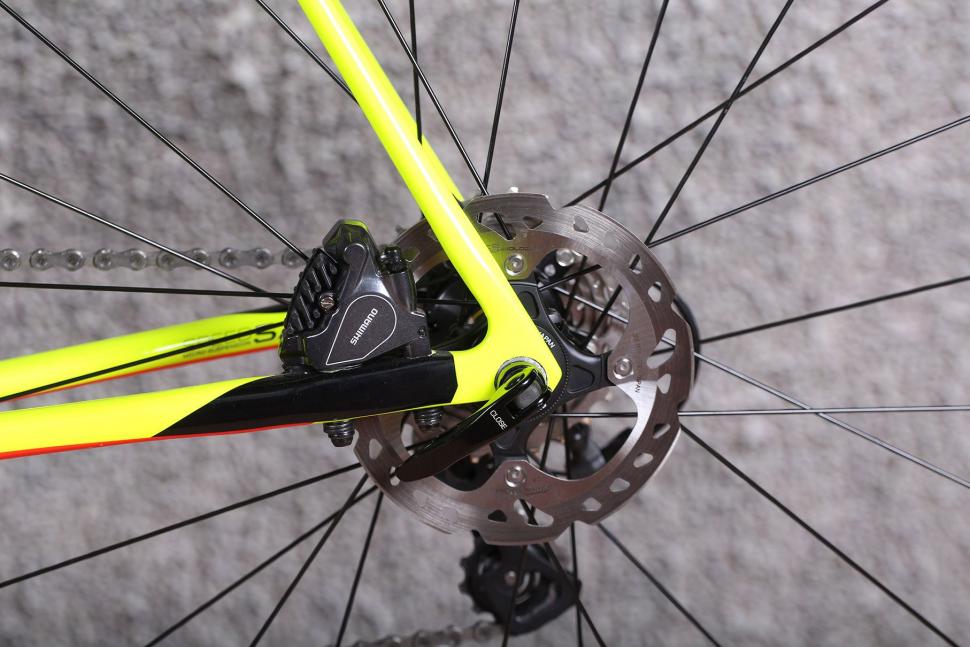
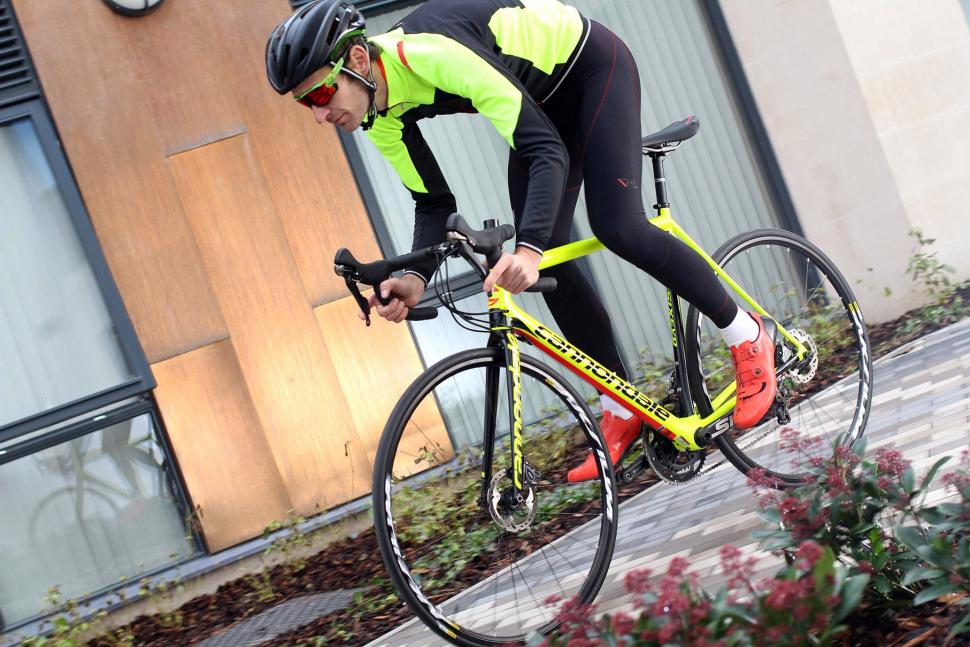

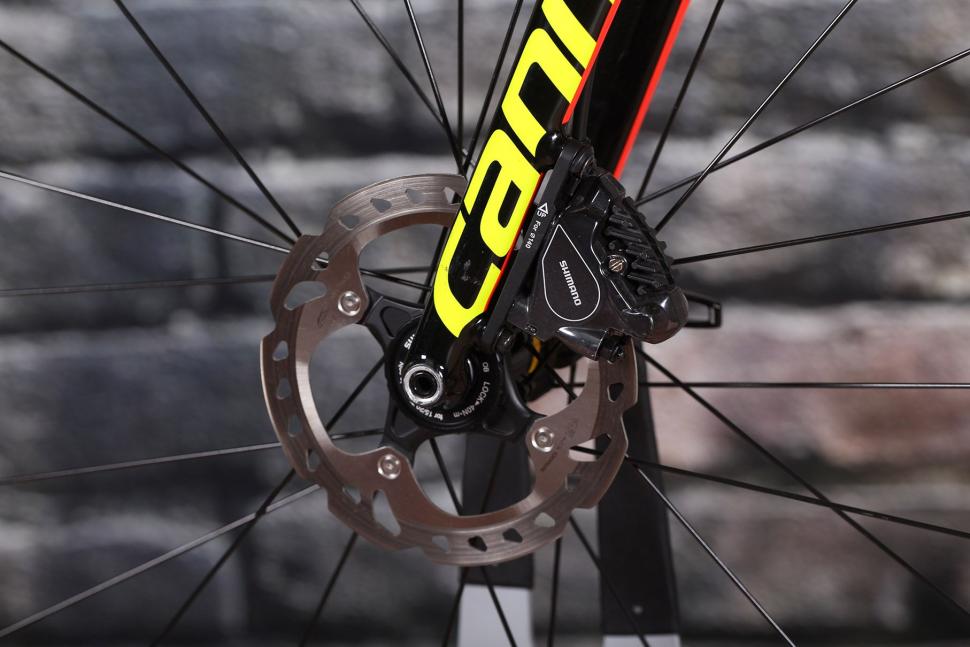


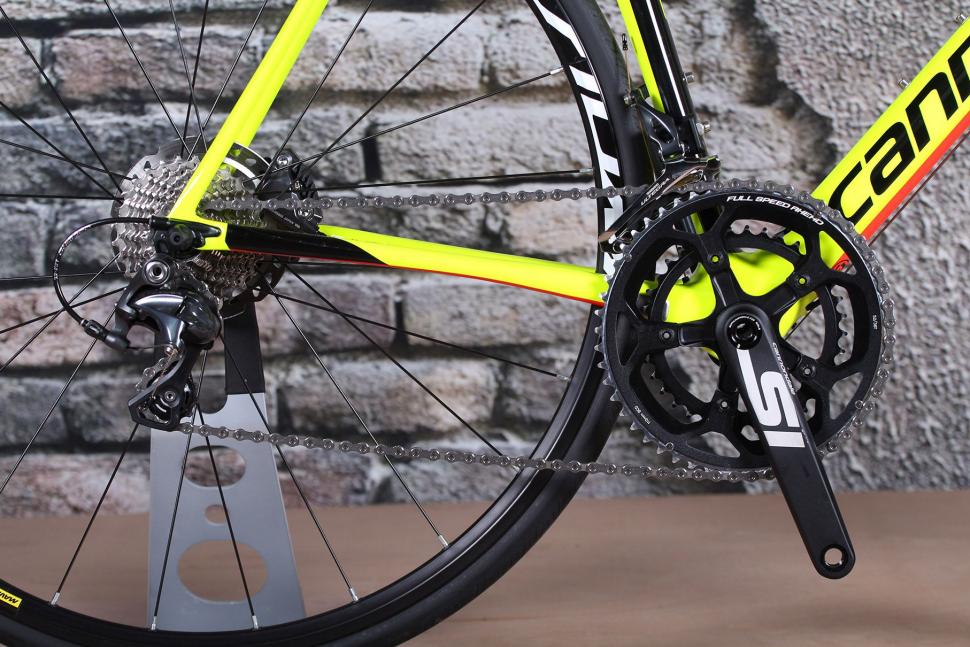
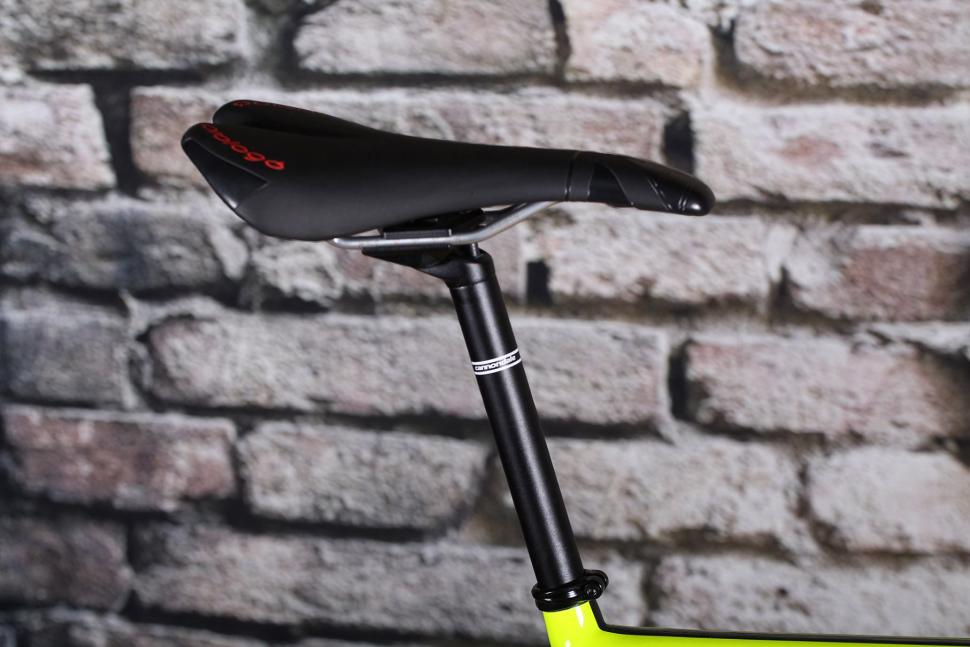

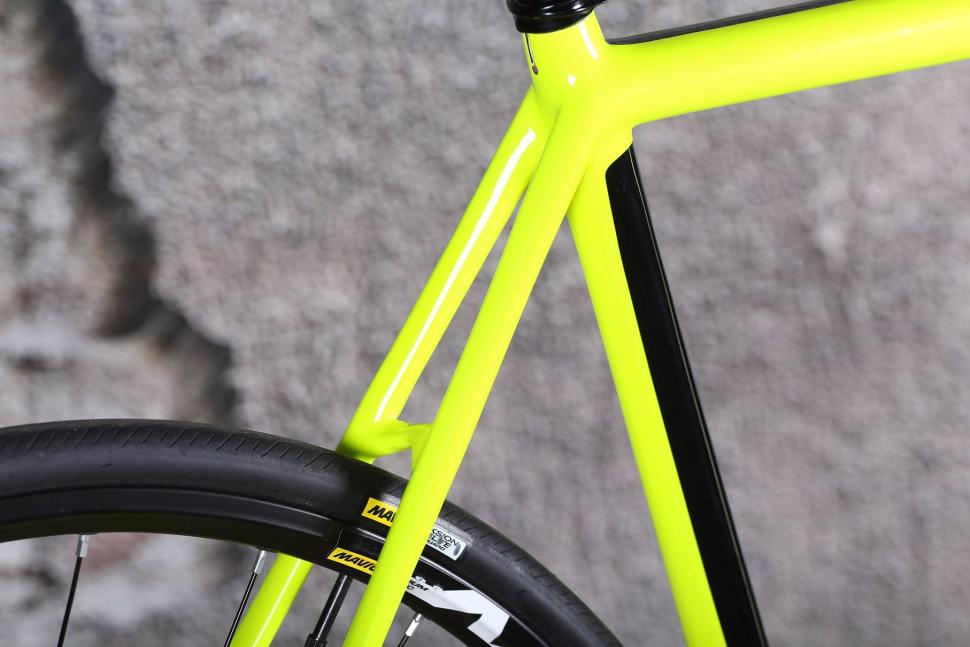
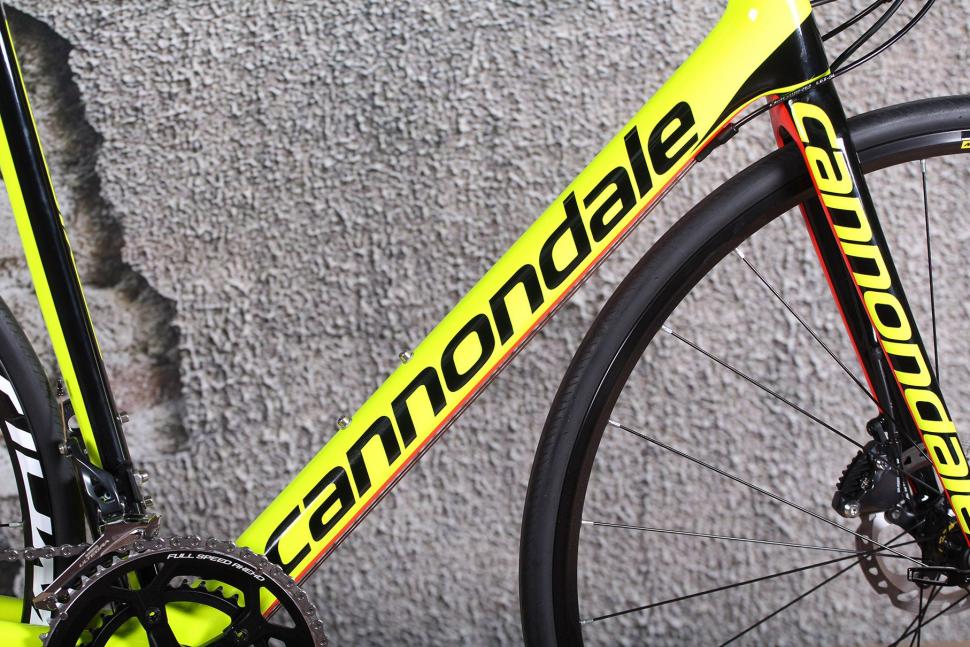
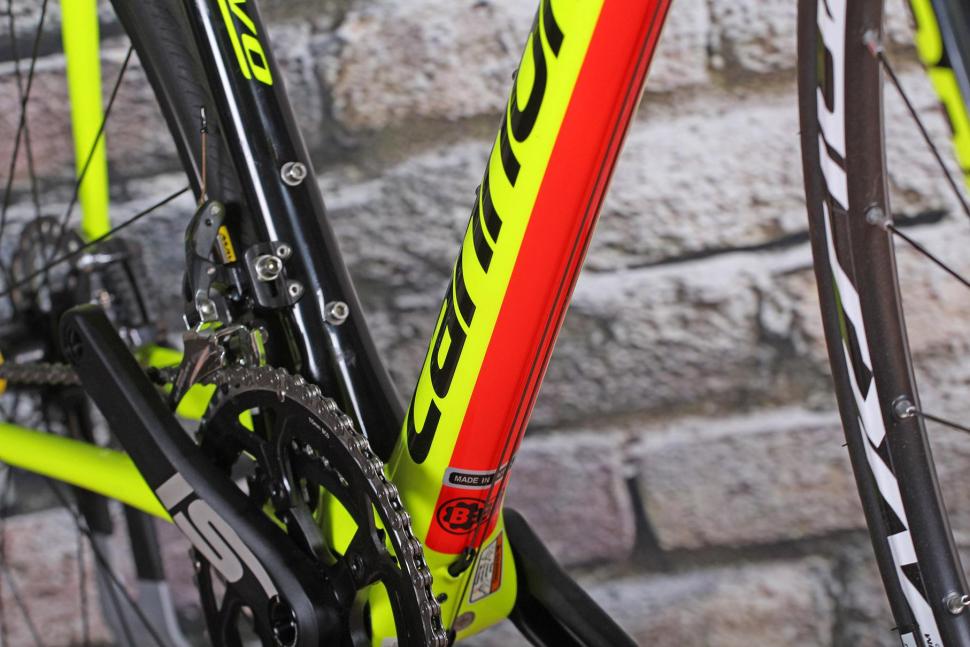
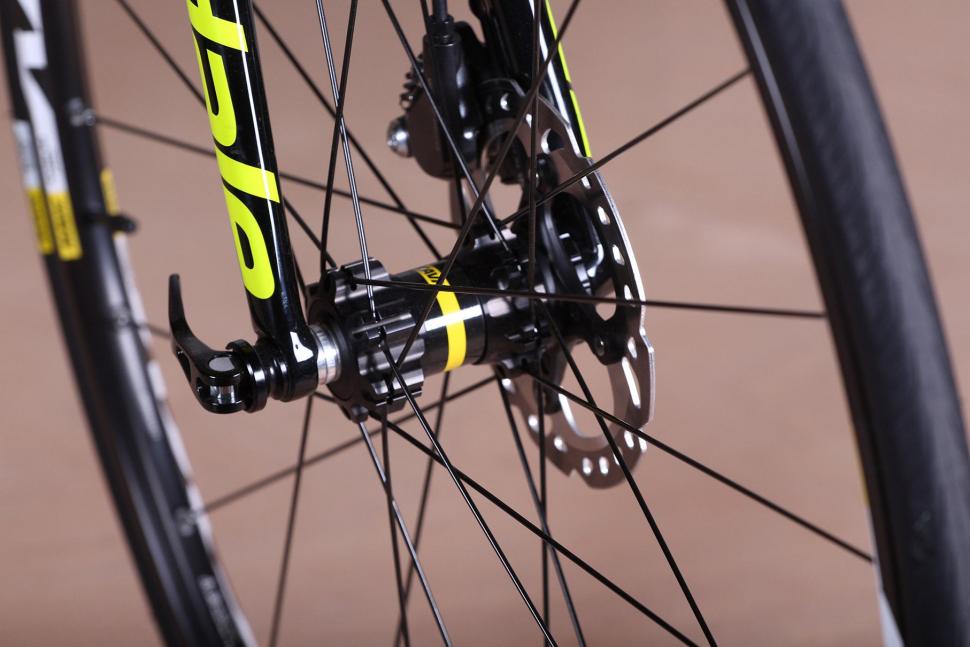
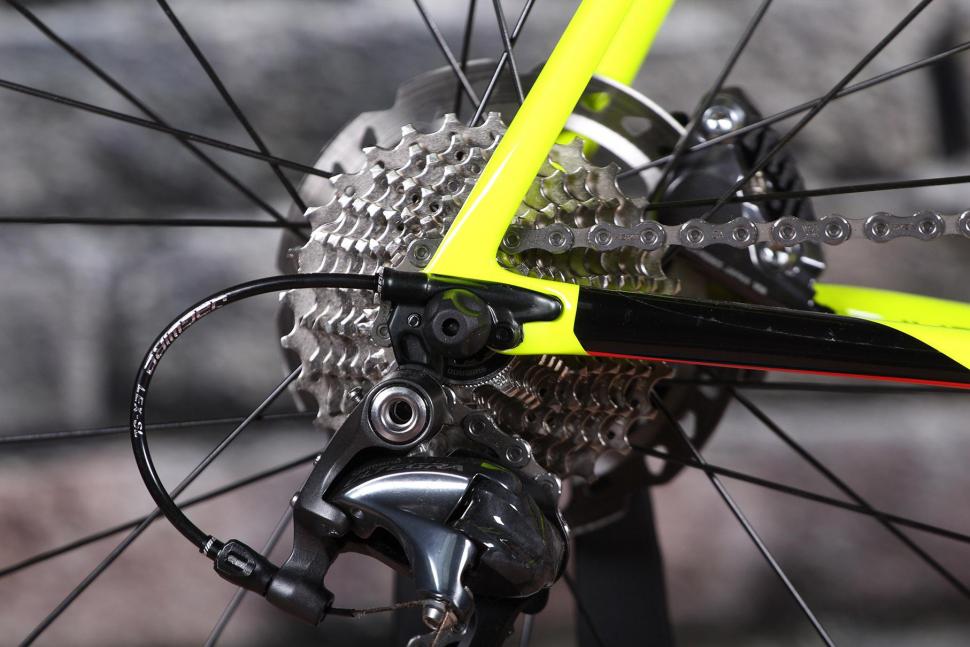


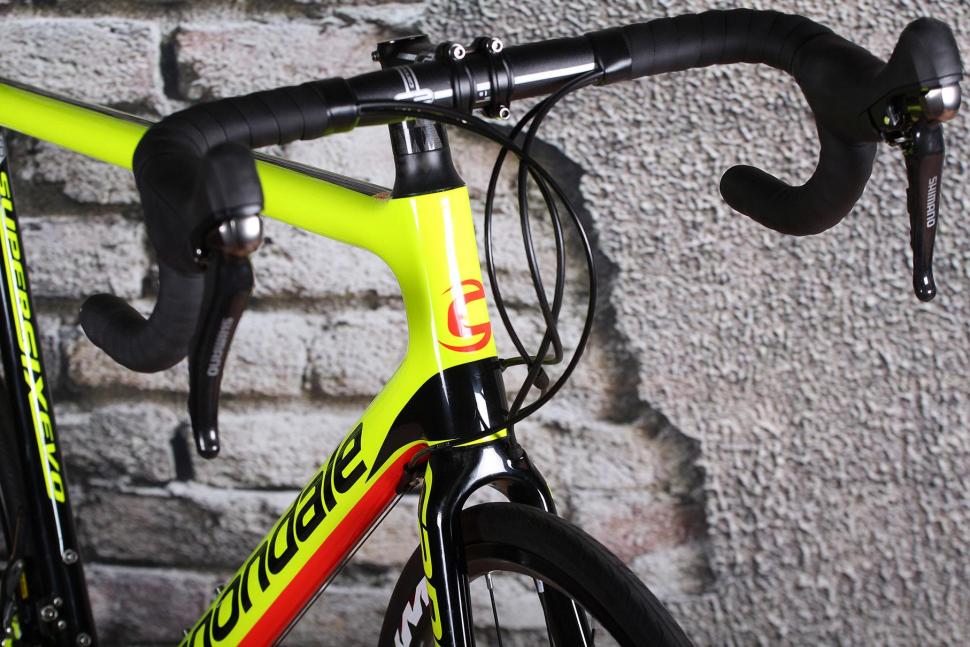




Add new comment
27 comments
You don't need a thru axle in the rear. You do on the front. Simple.
Would make the wheel change easier though, I think.
Changing the front on my Grade us a doddle. Changing the rear trying to slide the wheel into the dropouts while also keeping the disc aligned is less straightforward.
I'm pretty sure that Cannondale have kept to 28mm so that they could retain the frame geometry, particularly in the chainstays. I'm running 30mm tyres at the front and 28mm on the rear of my Evo with no issue. The issue with running 30mm tyres in the rear is the tyre height not so much the width of the tyre (albeit it would only accomodate by mm's). To fix that they would need to stretch the chainstays which would alter the ride characteristics. Having said that, you might be able to find a tyre that fits depending upon brand if you really wanted to run larger than 28mm.
What year is your dale? mines a 2015 so last of the old design and 28mm looks like it wouldbe tight.
Current model (2017) Supersix Evo hi-mod
Wider than 28 on a Grand Tour bike?!
30mm for commuting. 25-28mm for the longer / faster rides. I was just trying to illustrate that you can go a little wider than the manufacturers recommended size so long as the height of the tyre fits the frame.
Sure but the S6E is definitely not meant for commuting. Besides, a 28mm tyre on a 17mm rim will stretch to 30mm (or even beyond that), so if this fits the stays (not sure), you can have your pie and eat it too!
even a 23mm tyre can measure at 27on the appropriate rims
1381351930898-18aon6nbcewqo-630-354.jpg
If you only have one bike and you want a bike that can do it all, the S6Evo is a great option. Sure you could consider the Synapse for a commute or something a little more specific but for one that can cater for the commute during the week and longer, hilly, faster rides on other occasions it's the S6Evo for me.
Personally I wish more manufacturers would put cheap wheels on their mid-to-high end bikes. If I'm spending good money I want my choice of wheels, not theirs; I don't want to be lumped with eBaying whatever fancy set comes with the bike as I'm basically doing so at a loss.
@dreamlx10
HQ in Taiwan? My bad...
Wheels are becoming a bit like pedals, everyone has their preference on what they prefer to ride. So most bike shops look at it as an opportunity to upsell, buy the bike at a lower price with a training wheelset and spend your left over pennies on your race wheelset of choice.
I must say that I love Super6 Evo disc. I love the colour, looks, discs, weight...I would love to try it out.
Always thought it would be a perfect bike - dreaming of a day C'dale would revert to BSA BBs. Of the big 4 Americans (Spec, Gian, Trek and C'Dale), they are my favourite definitely.
Finally, just a comment on the wheels - surely they could've done better than Aksiums. I have long experience with them - robust wheels (I hate the bushing solution, had to go to eBay to solve the problem), no mistake there...but 2,1kg. I understand the "price point" approach...but still.
Except that Giant is Taiwanese
Cannondale really are taking the piss specing those wheels. £165 wheels spec'd on a £2.5k bike!!!!! Companies like Canyon do much better in that regard.
Just bought the HiMod version and ugraded wheelset (Mavic Cosmic Pro Carbon SL C Disc), DA 9100 drivetrain components, carbon bar etc. Amazing bike, never riden anything like it! 7.240 kg net weight so far.
People seem to be talking about 25mm as the minimum for road tyres, 28mm the normal, and larger than that even better in some circumstances, and Cannondale stick with a 28mm maximum even on their disc bike. Amazing
Not for me.
It is a race road bike, mind you. Want wider than 28, then get a gravel/endurance bike. Amazing, what people ask for!
Actually disagree with this. Think we'll see some increasingly clever frame tech in the future that reduces the need for n+1. Change wheels, swap out some other module and go.
You're forgetting that if they left room for wider than a 28mm, then there would be no need to buy the synapse disc as well!
Wait until USA come to their senses and elect someone sensible
I don't think we should be pointing fingers at the moment after the Brexit fiasco, and I wouldn't hold out much hope for the USA or the UK to vote for anyone sensible anytime soon, we haven't exactly got a great track record; Thatcher,Blair, Cameron etc
I don't recall Brexit campaign calling for scrapping carbon emissions targets so our businesses would be more efficient. This affects the world while with Brexit we only crapped in our own bed.
Don't buy American brands now. Wait until next year, when the US Dollar will have crashed even further than the Pound. That is if by then the thought of buying any bicycle has become ludicrous because we're all scavenging for scraps of food left at the bottom of discarded tin cans in a desperate struggle to survive. And Ant and Dec have become joint Prime Minister.
The DOW is at almost 19k and the Nasdaq is over 5k. If anything, it signals that investors are very optimistic about what a Trump Presidency might do for business. You might want to buy US products now before the US dollar rises.